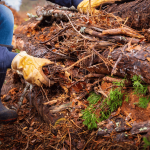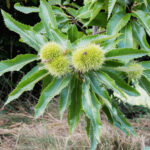How useful would a Hugelkultur bed be in a very dry climate?
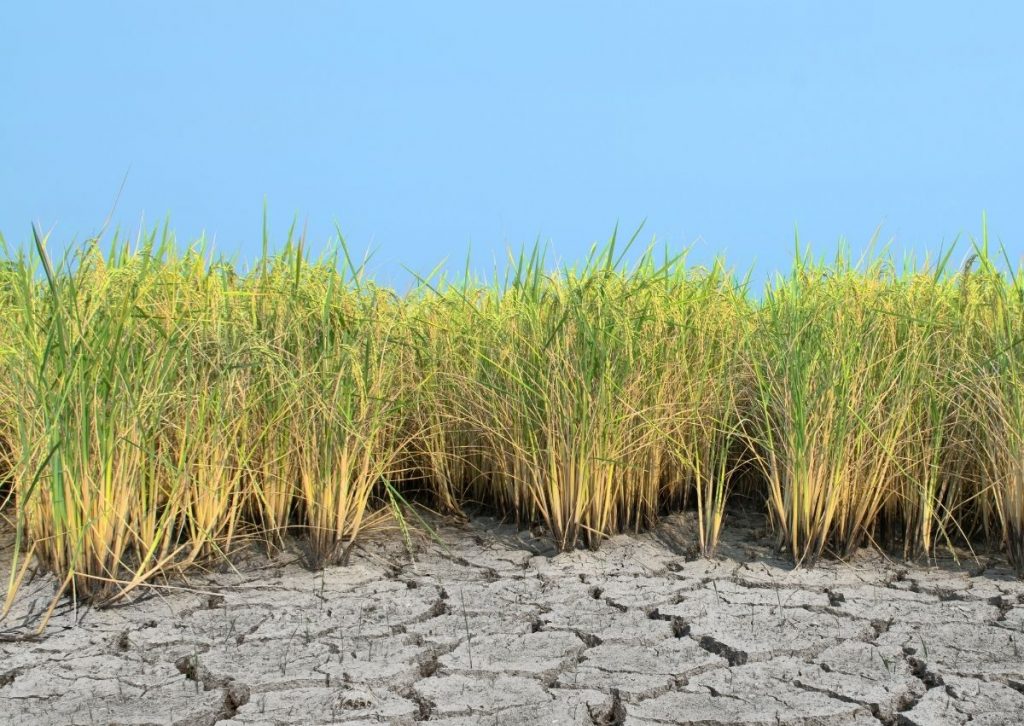
How useful would a hugelkultur bed be in a very dry climate? Traditionally hugelkultur is a raised bed where one layers old logs, branches, soil, nitrogen-rich material, and perhaps some compost. A raised style hugelkultur bed is not a very good idea in an area with a very dry climate. A sunken hugelkultur bed, however, might be a very good solution to keep moisture and to protect organic life in the soil, even in periods where there is no or little rain.
A hugelkultur in a ditch can help retain the scarce water and prevent bare soil. Cover crops and mulch are easier kept in place and the surface area is not as exposed if it had been a traditional mound style hugelkultur bed.
Goal: Reduce the surface area of a hugelkultur bed
In many areas with dry climate, like deserts, water comes rarely and when it does rain, it will often rain a lot. Most of the water from the rain in such areas will not be absorbed by the ground. You not only miss the chance to use the water, but it may also do harm by causing erosion from the runoffs.
Raised beds are more exposed to wind and sun as they have a larger surface area. With this larger surface area, the evaporation will be increased. This is something one absolutely should strive to avoid in an area with limited available rainfall, so one should try to do the exact opposite; reduce the surface area.
With this in mind should try to lead water and contain it below the surface, but still within reach for plants. A hugelkultur bed can contain a lot of water. Depending on the number of logs and their age and broken down state, they can function like a swamp. Slowly releasing the precious water to the plants over time.
The soil will need to contain a fair amount of organic matter in order to ensure the soil permeability (infiltration of water through the soil) is good.
Cover crops and shade from bushes and trees
If you successfully manage to get the soil to absorb the available water down into the sunken bed you do want to make sure it stays there for your plants as long as possible. The sun and warm winds can easily rob the bed of this precious resource.
Growing trees and bushes around the beds can provide valuable shade that lowers the temperature so evaporation is reduced and help prevent soil life does not get destroyed by the heat of the sun.
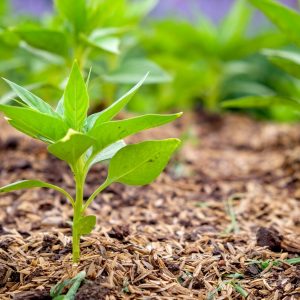
Cover crops and plenty of biodegradable mulch is very important to keep the soil alive. Straw, pruned branches from trees and bushes, wood chips, sawdust, etc, are examples of mulch that over time will break down and increase the organic matter in the soil. Get what you can easily get for free or that is inexpensive.
Plant types to avoid growing on and near your in-ground hugelkultur bed
One thing one absolutely should consider is what to grow on and near the hugelkultur sunken bed is how much water do the plants need and especially should one consider extra carefully what perennials one plant. If one were to plant eucalyptus trees near this resource of water, one might risk wasting all that work. So do consider which drought-tolerant perennials and annuals that will do well in your plant zone and local microclimate. Also note that the Eucalyptus trees and a few others are allelopathic, which is that they have defense mechanisms to fight off competing plants and often will do that more if they get stressed, like in a drought period.
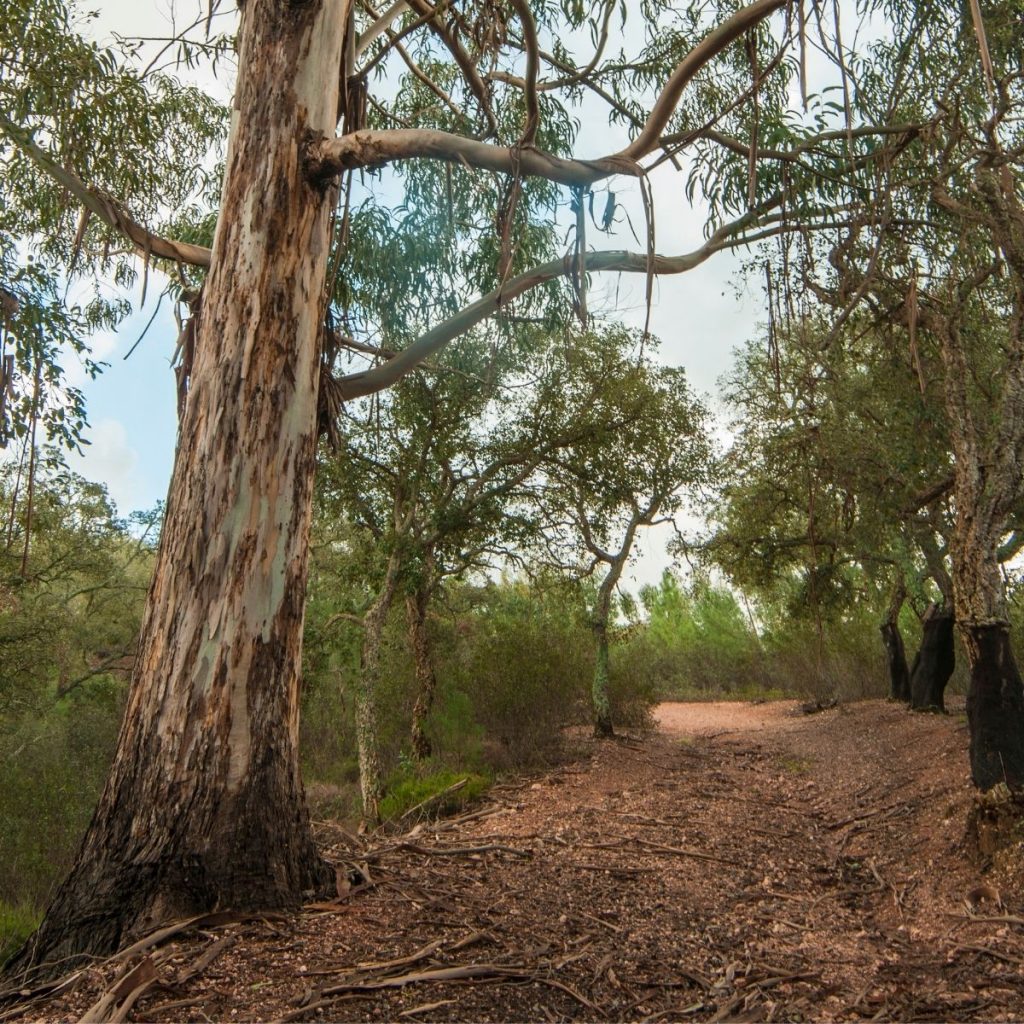
Water absorption
The most effective way to improve water absorption in the soil is to add organic matter and when one makes a hugelkultur as a sunken bed that is exactly what is done. Over time as mulch and the material within the hugelkultur bed breaks down the amount of organic matter will increase.
The water retention aspect of making Hugelkultur sunken beds is a very significant aspect that one wants to achieve. So it should be dug deep.
How deep should the sunken bed be?
The depth of the sunken Hugelkultur bed depends on how dry your climate is. The dryer the climate, the deeper it should be. In very dry climates, the deeper the ditch is dug, the better the hugelkultur bed likely will perform.
I would say one should dig as deep as possible, but no point in digging it so deep that you don’t have enough logs, branches, twigs, and such to fill up the bulk of it. The top of the hugelkultur should not end up in a deep pit where the sun can’t reach the plants. The top layer in the end, after it’s been planted and mulched, should be pretty even with the surrounding area.
Hugelkultur beds should not be built on contour as a swale.
A swale in a permaculture setting is a long trench that have been dug to capture, slow and spread the water along a contour line in the landscape. The soil dug up to make the trench is put on the lower side of the trench. On the berm one would often plant bushes and cover crops, often also fruit trees below the berm. On the upper side of the swale, trees and bushes that have erosion control properties are a good idea.
A hugelkultur bed, and especially a raised one, can more easily break than a regular swale as the berm should be compacted. A hugelkultur bed should not be made to withstand pressure, if you need a dam, then you better build a dam as a hugelkultur bed is not a good choice for this.
Are there special considerations to what materials to use?
Using what is available, with the exception of allelopathic materials, is always a good idea, but the more native the material the better. The local biology, the insects, and microorganisms are best equipped to break down the material you put in your hugelkultur bed, and that in turn will make sure you get as good and environmentally sustainable soil as possible.
Since this is basically a large, long term cold compost you do not need to be as concerned with the relationship between nitrogen and carbon materials, but I think it’s good to have it at least way, way back in my mind so one makes sure that there isn’t just one type. My hugelkultur beds usually have a much larger nitrogen part than carbon, but never 100%.
In a hot compost one need to be more concerned with the ratio of nitrogen rich material and carbon rich materials. You can have this in the back of your mind, but having a good mix of materials that have short time to break down and some that, like thick logs, takes longer time to break down is probably more important.
Examples of nitrogen and carbon sources suitable for composts and hugelkultur beds:
| Carbon (1 part) “brown” | Nitrogen (4 parts) “green” |
|---|---|
| fall leaves, pine needles | grass clippings, fresh leaves |
| wood chips, twigs, saw dust | fruit/vegetable scraps |
| paper (coffee filters, cardboard …) | manure (not human or pets) |
| straw, hey, corn stalks | eggshells, coffee grounds/tea bags |
| dryer lint, cotton fabric | seaweed, charcoal |
Are there any good alternatives to Hugelkulture in very dry climates?
Zaï holes
Zaï or Tassa is a farming technique to dig pits (20-30 cm long and deep and 90 cm apart) in the soil during the preseason to catch water and concentrate compost
Wikipedia
This traditional farming method from Northern Burkina Faso (named Zaï) and Tahoua region of Niger (named Tassa) where water is harvested in small pits can also be a solution for some, or perhaps it can be used as an addition. Everything doesn’t have to follow the same recipe, our situations are never the same and we hopefully learn from what we observe.
If you have any personal experience with hugelkultur beds in a dry climate or any feedback on the information gathered here please, do reach out.
kenneth@hugelkulturworks.com
Further Reading
Looking for ways to improve soil conditions in dry climates? Explore the potential of Terra Preta, a nutrient-rich soil from the Amazon that can retain moisture and enhance plant growth. Learn how to make your own Terra Preta in our comprehensive article

